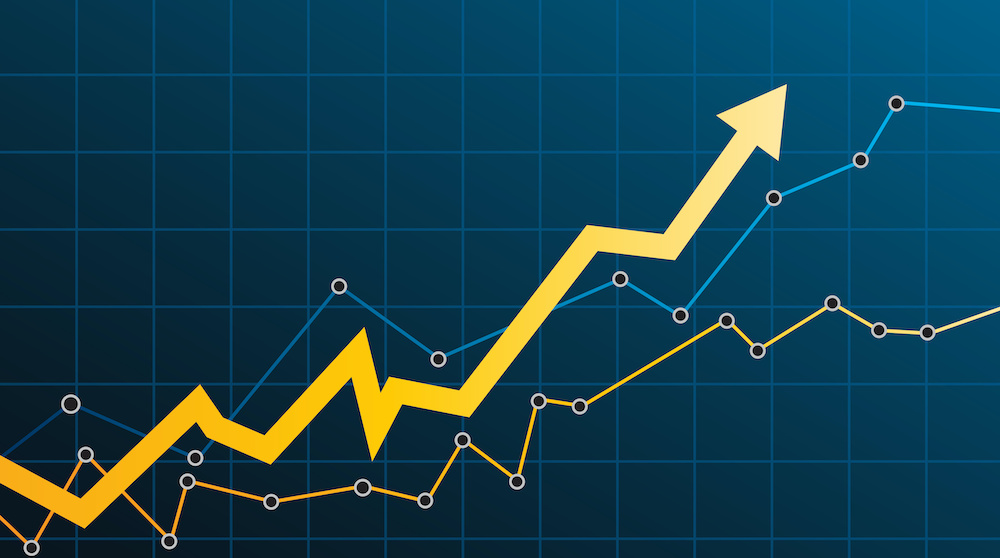In its latest set of economic forecasts published last Friday in the quarterly Monetary Policy Statement the RBA shows what it thinks the current Covid shutdowns will do to the Australian economy. The RBA’s “baseline” forecast scenario is one quarter of negative GDP growth followed by quick, robust recovery starting in Q4 2021 and delivering stronger economic growth than forecast previously in 2022.
It is not just 2022 growth that has been revised higher, the RBA’s baseline forecasts for the immediate past (Q2 2021 GDP) has been revised higher as well. The latest annual growth forecast for Q2 (the data will be released in early September) is 9.5% y-o-y revised up from 9.25% forecast back in the May MPS and 8.0% in the February MPS.
The repeated upside growth surprises have forced repeated upward revision to the RBA’s baseline GDP growth forecasts and have also generated upside surprises and need for upward revision to the RBA’s baseline forecasts of wage growth and inflation.
The Q2 wage price index will be released next week. The RBA’s latest MPS shows a forecast rise of 1.75% y-o-y, revised up from a forecast 1.5% in the May MPS. The RBA’s forecasts of wage growth show more pronounced upward revision at the end of this year to 2.25% y-o-y in the latest MPS from 1.75% in the May MPS.
Faster than expected GDP growth and spending since mid-2020 generating robust increases in employment and falling unemployment have tightened labour market conditions. Also, the infectious delta variant Covid outbreaks have pushed out the timeline for when international travel can resume, and higher immigration helps boost labour supply.
The RBA has revised up its CPI inflation forecasts too. The Q2 CPI released last month showed annual inflation at 3.8% y-o-y. Six weeks before the CPI release in the RBA forecast it would be 3.25% in the May MPS.
The RBA and all other forecasters see a pullback from this Q2 2021 annual inflation peak over the remainder of 2021 and over the first half of 2022 but to a higher base than previously forecast. The latest MPS forecasts annual inflation at 2.5% y-o-y in Q4 2021 and 1.5% in Q2 2022. In the May MPS the forecasts for the same two periods were 1.75% and 1.25%.
Beyond Q2 2022, the latest baseline forecasts from the RBA have annual inflation a quarter of a percentage point higher than forecast in May in Q4 2022 at 1.75% and then unchanged from their May forecasts at 2.0% in Q2 2023. The latest MPS adds another half-year forecast to Q4 2023 with annual inflation pushing up to 2.25% not far from challenging the mid-point of the RBA’s 2-3% inflation target.
Over the past year the unusually powerful bounce out of recession has left all forecasters floundering, including the RBA. Governments changing their budgets to spend whatever it takes to provide income support for businesses and households aided by central banks confirming they have changed from pre-emptive inflation-fighting warriors to reacting once inflation has taken hold are providing a springboard for GDP growth even when there is a renewed Covid setback as is the case currently in parts of Australia.
The RBA’s latest MPS forecasts annual GDP growth receding from 9.5% y-o-y in Q2 2021 to 4% y-o-y in Q4 2021. In the MPS released in May the Q4 GDP forecast was 4.75%. Given the lengthy Covid shutdown in Sydney and the growing length of the shutdown in Melbourne, a three-quarter percentage point reduction in Q4 GDP forecast may seem small but it reflects the dynamics of where the damage is occurring in the economy but also where damage is not occurring, or where the economy is getting even stronger than expected despite Covid.
The worst of the damage is to household consumption spending revised down in the RBA forecasts for Q4 2021 to 2.75% y-o-y from 5.5% forecast in May. Forecast spending on housing in Q4, in contrast, is revised upwards to 14.25% y-o-y in the latest MPS from 4.5% in May. The staggering upward revision to the housing forecast in just three months reflects how far spending on housing has been out-pacing forecasts in the current recovery and even seems to be fuelled to greater heights by Covid lockdowns.
Business investment spending, bouncing off years of unusually low spending is also beating forecasts in the current recovery and has required the RBA to revise up its forecast to 8.5% y-o-y for Q4 2021 from 6.0% in the May MPS.
Of course, the RBA’s forecasts are hedged by assumptions about when life returns to near-normal after the current lockdowns and what that life looks like. But the essential point of the RBA’s current forecasts is that pent-up demand will find a way of showing itself in higher spending once conditions permit. That is why the RBA has lifted its GDP growth forecasts to 4.5% y-o-y in Q2 2022 (4.0% forecast in the May MPS) and 4.25% in Q4 2022 (3.50% in May).
The risk to the RBA’s forecasts in the phase of renewed recovery beyond the current lockdowns is a repeat of what happened in the first recovery phase that exuberance takes over leaving the RBA needing to repeatedly upgrade its forecasts. We foresee this occurring, and the RBA finding itself in the second half of 2022 forecasting annual wage growth at 3%+ in 2023 and inflation at 2.5%+.
The new inflation-loving RBA will not worry unduly about higher forecast wage growth and inflation. It is now in the business of reacting once data proves that wage growth and inflation are high. That means upgrades to forecasts in 2022 will warn of tighter monetary conditions ahead but will not trigger a change. That will come with the data and at this stage that looks like showing in 2023 a year ahead of the RBA’s current and much repeated 2024 at earliest guidance.

